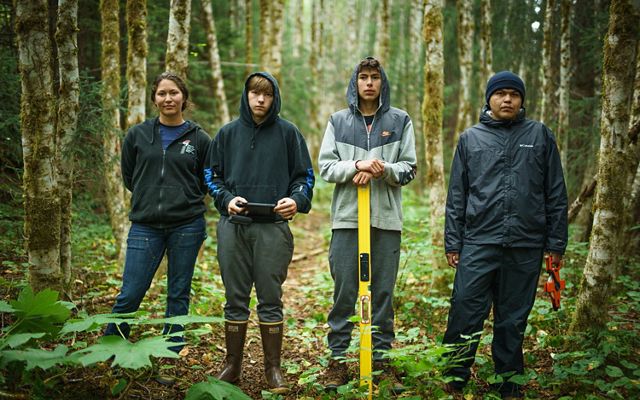Mitákuye Oyásʼiŋ is a Lakota phrase that roughly interprets to “all my relations” or “we’re all associated.” It’s on this phrase, concurrently temporary and stuffed with depth, that we will start to grasp the values of interconnectedness and reciprocity that anchor Indigenous worldviews and data.
The United Nations Everlasting Discussion board on Indigenous Points has deliberately not adopted a definition for “Indigenous” as a result of international range of Indigenous cultures. As such, and as a result of my identification as a non-Native individual, I can not clarify what it means to be Indigenous. What I’ll say, with reference to the U.N., is that Indigenous peoples all through the world have defining cultural traits, comparable to distinctive languages, data programs and beliefs, sturdy hyperlinks to territories and surrounding pure sources, and a resolve to take care of and reproduce their ancestral environments and programs as distinctive peoples and communities. Moreover, Indigenous peoples all through the globe share the somber undeniable fact that their historical past is riddled with acts of survival in opposition to colonizing states’ efforts to eradicate them (see: “An Indigenous Peoples’ Historical past of the US“).
Whereas Indigenous communities and tribal nations range broadly in tradition, custom, historical past, language, governance, so on and so forth, interconnectedness and reciprocity are frequent threads in lots of Indigenous cultural worldviews, which set the inspiration for his or her relationship with the Earth.
After I was getting my Grasp’s diploma at Utah State College, I had the privilege and honor of partaking Indigenous worldviews and data, and dealing with members of the Northwestern Band of the Shoshone Nation. My analysis in contrast how local weather change and environmental issues are mentioned in another way between Indigenous and Western peoples within the information media. It was by this course of that I turned intimately accustomed to Indigenous conventional ecological data. Whereas acknowledging the variety inside Indigenous communities, conventional ecological data may be regarded as a catch-all time period for Indigenous environmental data.
There are numerous useful and in another way contextualized definitions of conventional ecological data formalized by Indigenous students. Maybe sarcastically, the U.S. Fish and Wildlife Service definition felt complete and comprehensible to the layperson, and to folks much less accustomed to Indigenous tradition. USFWS says: “(Conventional ecological data) refers back to the evolving data acquired by indigenous and native peoples over a whole bunch or hundreds of years by direct contact with the surroundings. This data is particular to a location and consists of the relationships between vegetation, animals, pure phenomena, landscapes and timing of occasions which might be used for lifeways, together with however not restricted to searching, fishing, trapping, agriculture and forestry. TEK is an accumulating physique of data, apply and perception, evolving by adaptive processes and handed down by generations by cultural transmission, concerning the relationship of dwelling beings (human and non-human) with each other and with the surroundings. It encompasses the world view of indigenous folks which incorporates ecology, spirituality, human and animal relationships, and extra.”

Assist Native Journalism
This place-based, generationally-accumulated, bound-to-spirituality, environmental data stands in distinction to Western science, which is commonly text-based, reductionist, hierarchical, categorical, and devoid of non secular affect. It isn’t to say that one is best than one other, however it’s to say that they’re totally different.
There’s an incomprehensible, inherent worth of Indigenous conventional ecological data that has solely lately been acknowledged by Western scientists, whose pure science “discoveries” have typically been recognized by Indigenous communities for a whole bunch, if not hundreds of years. Might you think about the breadth of our international environmental data if we gratified conventional ecological data?
A definite instance of this pertains to wildfire, a constant concern for our Intermountain West communities. Indigenous communities have been training what we name “managed burning” for hundreds of years, echoing that “fireplace is medication.” When settlers colonized westward, land administration businesses such because the U.S. Forest Service, started suppressing fireplace, presuming all fires are dangerous. Suppression on our fireplace tailored landscapes has catalyzed the catastrophic mega-fires we’ve seen over the past a number of many years, as a result of elevated forest fuels and drought from local weather change. As of lately, Forest Service branches have been co-managing forests with western U.S. tribes to nice success, who maintain ancestral forest administration data, or conventional ecological data.
It has turn into frequent data that whereas Indigenous peoples solely signify 5% of the worldwide inhabitants, they defend roughly 80% of the world’s biodiversity. Learn that once more. Given the 69% decline in wildlife populations between 1970 and 2018, that’s vital. Take this as a sign to advocate for Indigenous sovereignty, self-determination, proper to their lands, and to revere Indigenous conventional ecological data, as in doing so, you’re serving to the planet.
I wish to use this house to acknowledge the Ute Tribes, the Indigenous peoples whose lands we at present reside on. Go to SouthernUte-nsn.gov/historical past/ to be taught extra concerning the Ute Tribes, or go to the Ute Indian Museum in Montrose to be taught extra from members of the Ute neighborhood.
Moreover, Darren Parry, former Chairman of the Northwestern Band of the Shoshone Nation, shall be talking with our neighborhood on the second annual Don & Jennifer Holzworth Local weather Speaker Collection. His dialogue shall be on Feb. 16, and you may register at no cost.
If you want to learn my thesis analysis, you’ll find it right here: Reversing the Gaze: Utilizing Indigenous and Western Worldviews to Evaluate Protection of Local weather Change and Indigenous Peoples within the Information Media.
Gina McCrackin is the Local weather Motion Collaborative Supervisor at Strolling Mountains Science Middle. The Local weather Motion Collaborative is working to cut back greenhouse gasoline emissions in Eagle County 50% by 2030 and 80% by 2050.


